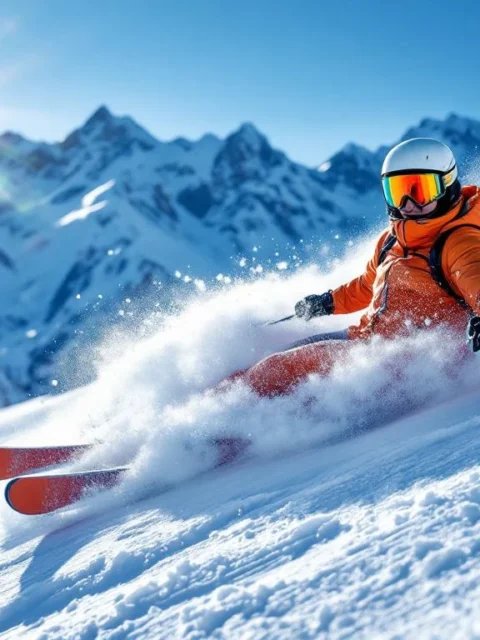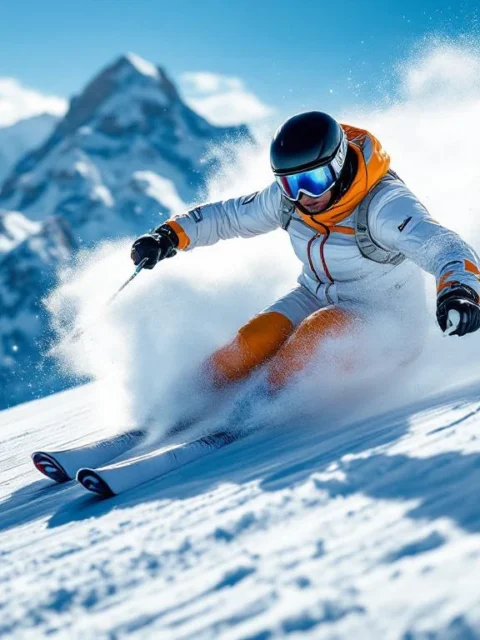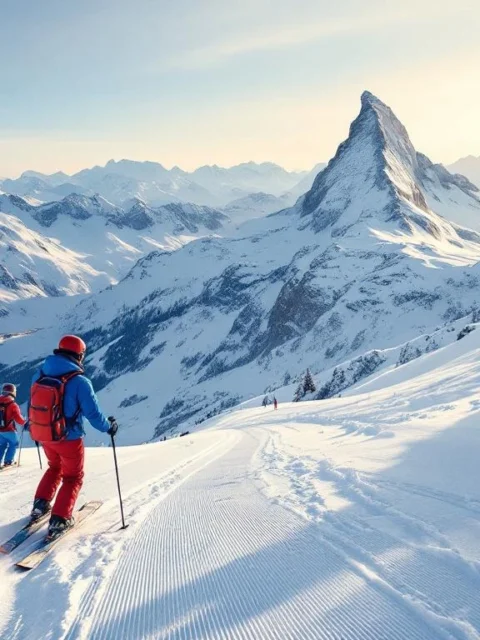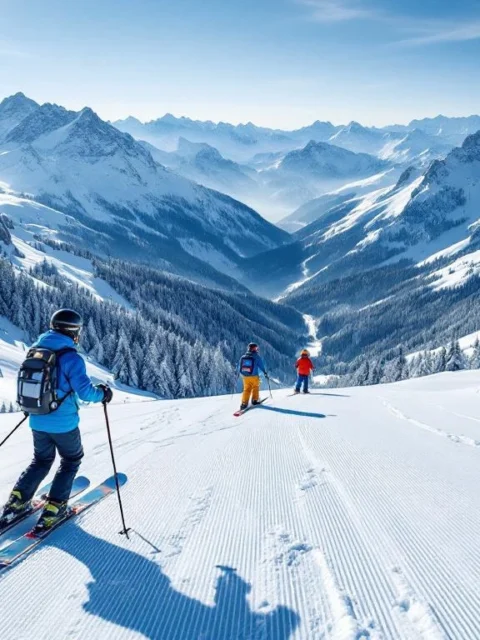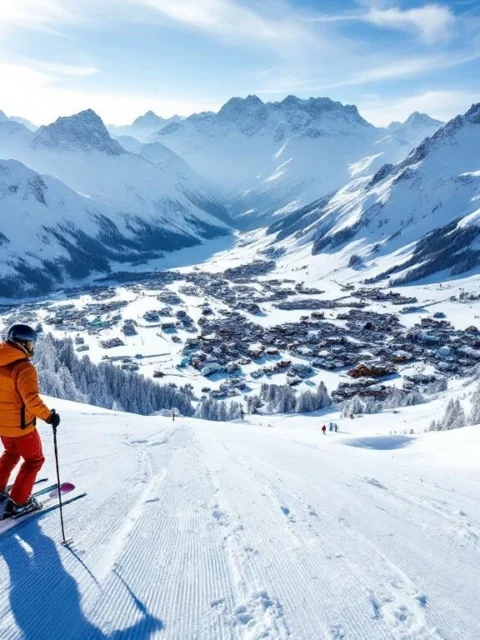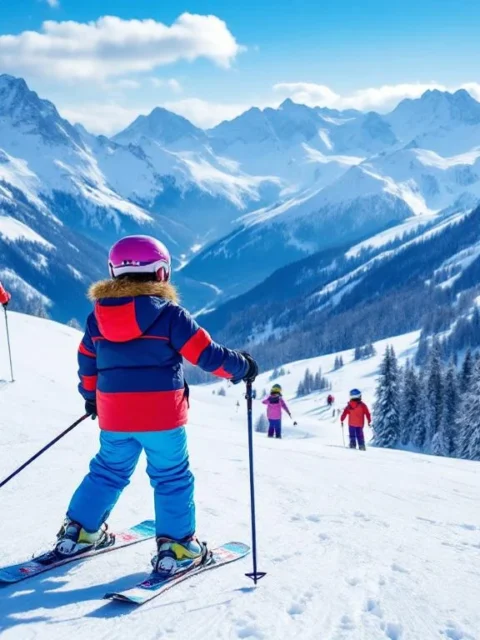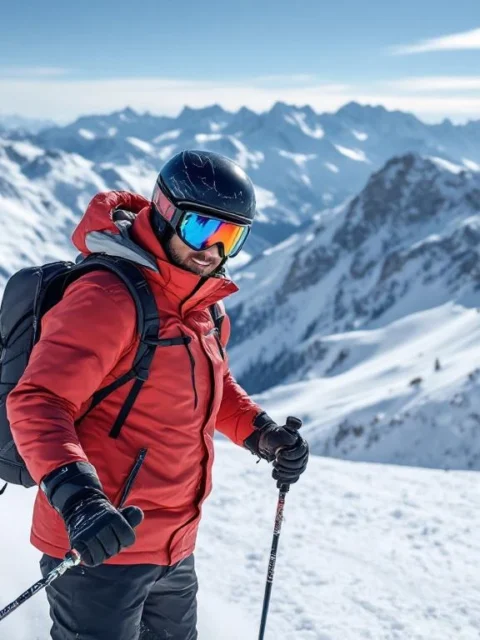How to Prepare Children for Their First Ski Lesson?
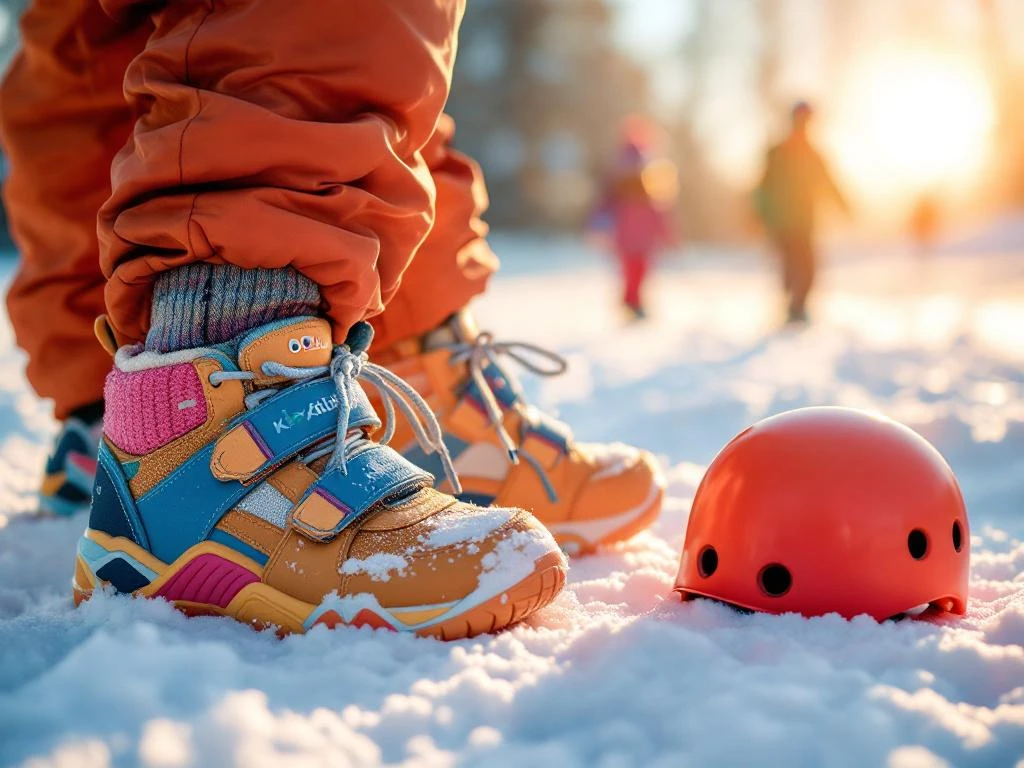
Your child’s first ski lesson is an exciting moment – both for them and for you! Good preparation makes the difference between a frustrating experience or the beginning of a lifelong passion for winter sports. By preparing your child mentally and physically, arranging suitable clothing, choosing the right type of lesson, and alleviating fears, you’ll create a solid foundation for success on the slopes.
What Should You Do Before Your Child’s First Ski Lesson?
Before your child attends their first ski lesson, it’s important to build basic fitness, playfully introduce ski equipment, and create positive expectations. Start 4-6 weeks before your vacation with fun activities like cycling, swimming, or balance exercises to strengthen leg muscles and develop a sense of balance.
Good physical preparation doesn’t have to be boring! Turn it into a family game by practicing squats, standing on one leg, or hopping together. This not only strengthens leg muscles but also makes the idea of skiing more enjoyable. Children who are already accustomed to physical activity will be less likely to tire quickly during their first lessons.
Let your child get familiar with ski clothing and equipment at home. Have them wear ski clothes, get used to the feeling of ski gloves, and practice wearing a helmet. You can even “dry practice” the correct skiing posture at home or in the garden – slightly bent knees, leaning slightly forward, and hands extended forward.
Talk enthusiastically about what they can expect during the ski lesson. Tell them about the ski lifts, the snow, and how the instructor will help them. Watch videos together of children learning to ski or read books about winter sports. This creates positive expectations and mentally prepares your child for the adventure.
Also consider visiting an indoor ski hall near you, where children can get used to snow and possibly even take a first lesson. This provides a gentle introduction to winter sports in a controlled environment before heading to the real mountains. You can find more information about preparatory ski lessons that are perfect for beginners.
What Clothing Is Essential for a First Ski Lesson?
For a first ski lesson, your child needs warm, waterproof clothing that allows freedom of movement. Essential items include a waterproof ski jacket and pants, thermal underwear, a warm middle layer, ski socks, waterproof gloves, a helmet, and a scarf or neck warmer. These layers provide warmth while wicking away moisture.
The layering principle is key to comfort on the slopes. Start with thermal underwear that wicks sweat away from the skin. Choose materials like merino wool or synthetic fabrics specifically developed for winter sports – avoid cotton because it retains moisture and feels cold when wet.
The middle layer, such as a fleece sweater or a thin down jacket, provides insulation. The outer layer should be completely waterproof, preferably with taped seams and snow gaiters in the pants. Ensure that the ski jacket and pants are roomy enough for freedom of movement, but not so large that they’re cumbersome.
Good gloves are essential. Choose waterproof ski gloves with a long cuff that falls over the sleeve. Mittens are often warmer than gloves with fingers, which can be an advantage for young children. Don’t forget to bring a spare pair in case the first pair gets wet.
A well-fitting ski helmet is not a luxury but a necessity. The helmet should fit comfortably without pinching or sliding. Many ski schools require children to wear helmets. Combine this with ski goggles that fit well with the helmet to protect the eyes from snow, wind, and UV radiation.
Special ski socks are worth the investment. They provide extra protection on specific pressure points and keep feet warm without excessive sweating. Wear only one pair – multiple pairs on top of each other can actually lead to blisters due to friction.
Don’t forget the small accessories that make a big difference: a neck warmer or scarf to prevent drafts, sunscreen with high protection factor (snow reflection intensifies UV radiation), and possibly hand warmers for extra warmth during breaks.
When Is a Child Ready for Group Lessons Versus Private Lessons?
A child is ready for group lessons when they are socially skilled, can follow basic instructions, and can stay focused for about 15-20 minutes. Private lessons are more suitable for very young children (3-4 years), children who need extra attention, or for specific learning goals. Your child’s personality and learning style are decisive factors in this choice.
In group lessons, children learn in a social environment with peers. This can be motivating because they encourage each other and learn from one another. Group lessons are ideal for socially-oriented children who enjoy learning and playing together. They are often more affordable than private lessons and offer a good balance between instruction and fun.
Pay attention to group size when choosing group lessons. Smaller groups (4-6 children) offer more individual attention than larger groups. Most ski schools divide groups based on both age and level, creating a pleasant learning environment.
Private lessons offer personalized instruction and faster progress. They are ideal for children who:
- Are shy or hesitant in groups
- Have difficulty concentrating in a busy environment
- Have specific fears that require individual attention
- Learn faster or slower than average
- Are very young (3-4 years) and need extra guidance
A compromise could be to start with a few private lessons to build basic skills and confidence, then switch to group lessons. Some ski schools also offer semi-private lessons for 2-3 children, which can be a good compromise between individual attention and social interaction.
The ideal age to start ski lessons varies per child, but usually children around 4-5 years are physically and mentally ready for structured ski lessons. Young children (3-4 years) often benefit from shorter lessons with plenty of playful learning, while older children (6+ years) can handle longer lessons with more technical focus.
How Do You Help Children Deal with Fear Before Their First Ski Lesson?
To help children deal with fear before their first ski lesson, acknowledge their feelings without reinforcing them, visit the lesson location beforehand, introduce them to the instructor, use positive role models, and keep the focus on fun rather than performance. Gradual exposure to the new environment reduces uncertainty.
Fear of the unknown is completely normal in children. Take their concerns seriously, but remain positive and calm yourself. Statements like “There’s nothing to be afraid of” don’t help, but “I understand that it’s exciting, and that’s okay” provides acknowledgment without reinforcing the fear.
Visiting the ski area or lesson location before the first lesson can work wonders. Let your child explore the environment, watch other children taking lessons, and become familiar with the place. If you can meet the instructor beforehand, this helps build a connection before the lesson begins.
Using positive role models is a powerful strategy. Show your child videos of other children learning to ski and having a good time. If there are older siblings or friends who already know how to ski, they can share their enthusiasm and show that it’s fun.
Avoid putting pressure on performance. Emphasize that it’s about having fun and trying new things, not about how quickly they learn or how good they are. Celebrate small successes and encourage perseverance rather than perfection.
Prepare your child for falling. Explain that everyone falls when learning to ski – even the best skiers – and that getting up and trying again is part of the learning process. You can even practice falling and getting up at home to show that it doesn’t have to be scary.
Consider staying present during the first lesson, but at a distance. Some children feel safer knowing you’re nearby. Discuss this in advance with the ski instructor, as for other children, the presence of parents can actually be distracting.
If your child is very anxious, start with a private lesson instead of a group lesson. An instructor who can give full attention to your child can better address specific fears and adjust the pace to what your child can handle.
Finally: An Unforgettable First Ski Experience
Good preparation is half the battle when it comes to your child’s first ski lesson. By paying attention to physical preparation, the right equipment, the appropriate form of instruction, and dealing with any fears, you create the best conditions for a positive first introduction to winter sports.
Remember that fun comes first! Children who have positive first experiences with skiing often develop a lifelong passion for winter sports. Celebrate small victories, be patient with setbacks, and focus on the joy of being in the mountains together.
At Ski-Pro, we understand how important those first ski experiences are. That’s why we’re happy to help you find the perfect ski school and instructor that matches your child’s needs and personality. With more than 250 ski schools and instructors in our network, there’s always a suitable match that will give your child an unforgettable introduction to the world of winter sports.
Frequently Asked Questions
How long does an average ski lesson for children last and how do I prepare my child for this duration?
An average ski lesson for children usually lasts between 1.5 and 2 hours, depending on the age and concentration ability. For young children (3-4 years), shorter lessons of 45-60 minutes are often more effective. Prepare your child by doing short concentration exercises at home and ensure they get a good night's sleep and nutritious breakfast on the day of the lesson. It's also wise to pack small snacks and a water bottle for energy replenishment during breaks.
What should I do if my child wants to stop halfway through the ski lesson or becomes upset?
If your child wants to stop halfway through, discuss in advance with the ski instructor how to handle this situation. Many experienced instructors have strategies to motivate children to persevere or take a short break if necessary. Arrange where you'll be reachable during the lesson and consider staying nearby at the beginning without being in sight. Always congratulate your child on what they have achieved, even if the lesson ends early, and try to maintain a positive attitude for the next time.
How do I deal with rivalry or comparison between siblings or friends who are learning to ski together?
Rivalry between children can negatively impact the ski experience. Emphasize that everyone learns at their own pace and that skiing is not a competition. Avoid comparisons and focus on each child's individual progress. Consider placing children with different levels or temperaments in different groups, allowing each child to develop without direct comparison. Celebrate each child's unique successes and teach them to support rather than compete with each other.
What simple exercises can we do after the ski lesson to reinforce the skills learned?
After the ski lesson, you can practice 'pizza' (snowplough) and 'french fries' (parallel skis) with your child on a flat surface, letting them feel how the different positions work. Walk through the movements they've learned together and have your child explain what they did during the lesson. For balance improvement, you can take sideways steps together on a safe, slightly sloping surface or play small games like 'Skier Says' (similar to 'Simon Says') where your child has to assume different skiing positions.
How do I determine when my child is ready for more difficult slopes after the first lessons?
The transition to more difficult slopes should be based on both technical skill and confidence. Ask the ski instructor for an honest assessment of your child's abilities and suitability for different slopes. A good sign is that your child can stop in control, make turns in both directions, and is comfortable on the current slope without fear. Build gradually: go from an easy blue slope to a more challenging blue before attempting a red slope, and always ski together when exploring new slopes.
What are common mistakes parents make during the first ski vacation with children?
Common mistakes include overestimating children's endurance and planning too long days without sufficient rest periods. Many parents also underestimate how tiring the combination of altitude, cold, and new physical movements can be. Another mistake is pushing children to more difficult slopes before they're ready, which can lead to fear and resistance. Finally, some parents forget to schedule enough time for playful activities in the snow outside of formal lessons, while these free play moments actually contribute to skiing enjoyment and the development of natural balance.
How do I find a ski instructor who specializes in teaching children with specific needs (such as ADHD or anxiety disorders)?
For children with specific needs, it's important to contact the ski school directly and discuss your situation before booking. Ask specifically for instructors with experience or training in working with children with similar needs to your child. Larger ski schools often have specialized programs or instructors with backgrounds in special education or child psychology. Consider a private lesson as a first introduction so the instructor can fully adapt to your child's pace and needs, and prepare the instructor well in advance by providing clear information about what works for your child.



